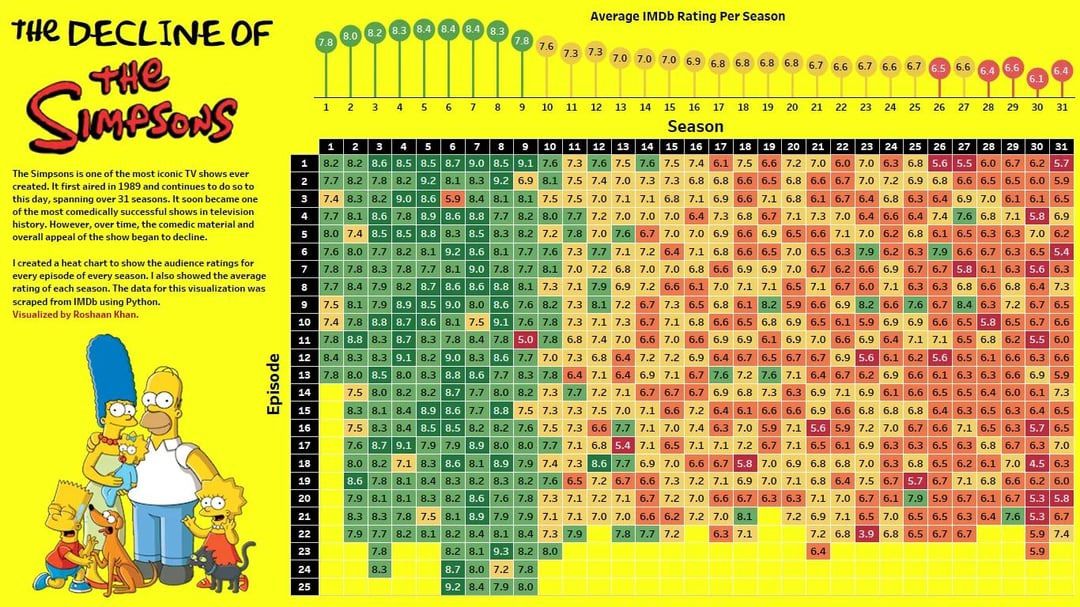this post was submitted on 27 Apr 2024
689 points (97.9% liked)
Data Is Beautiful
6881 readers
1 users here now
A place to share and discuss data visualizations. #dataviz
(under new moderation as of 2024-01, please let me know if there are any changes you want to see!)
founded 3 years ago
MODERATORS
you are viewing a single comment's thread
view the rest of the comments
view the rest of the comments

I'm just nitpicking but why are 7.7 and 6.6 arbitrary the thresholds for the colour change? Also, why is one 6.6 red while another two are yellow?
It appears that the colours are not on a fixed scale. The season averages and individual episodes are coloured using different ranges.
It ranges from lowest to highest regardless of the value. Like conditional formatting in Excel does if you don't specify the scale.
The seasons average ratings range from 6.1-8.4, so it goes red to green in the span of 2.3 points.
The episodes range from 3.9 to 9.3, so it goes red to green in the span of 5.4 points.
The full IMDb ratings range from 1-10. This should have been used as a basis for the colouring instead. The overall average on IMDb is somewhere around 7, so it would be fine to skew the colours so the middle/yellow was at 7, but it should be able to represent any possible ratings.
Should probably also be acknowledged that the sample size is not going to be the same.
You're going to get a bunch of people piling in to highly rate the early episodes that they remember watching when they were kids, but a significantly lower number are going to be voting on the episodes that came later.
Really the whole premise of trying to compare and contrast the seasons for such a long running show that existed before IMDb even started is flawed on many levels.
If the music labels are botting up Spotify playcounts, are media producers botting up IMDb ratings?
Yes, it has been observed that IMDb sometimes get a lot of new "single post users" putting in 10/10 ratings on Disney movies that otherwise scored badly.
I think it's fair to colour seasons and episodes with different scales because they are measuring different things.
Due to the Central Limit Theorem, average of 20+ episodes will have a smaller standard deviation than individual episodes.
For example, an individual episode with a score of 6 you'll probably watch. A whole season with a score of 6, maybe not.
I agree, almost all episodes still get a passing grade. Using 1-10 as a basis, it would paint an entirely different picture.
maybe the displayed value was rounded but the value for the color wasn't